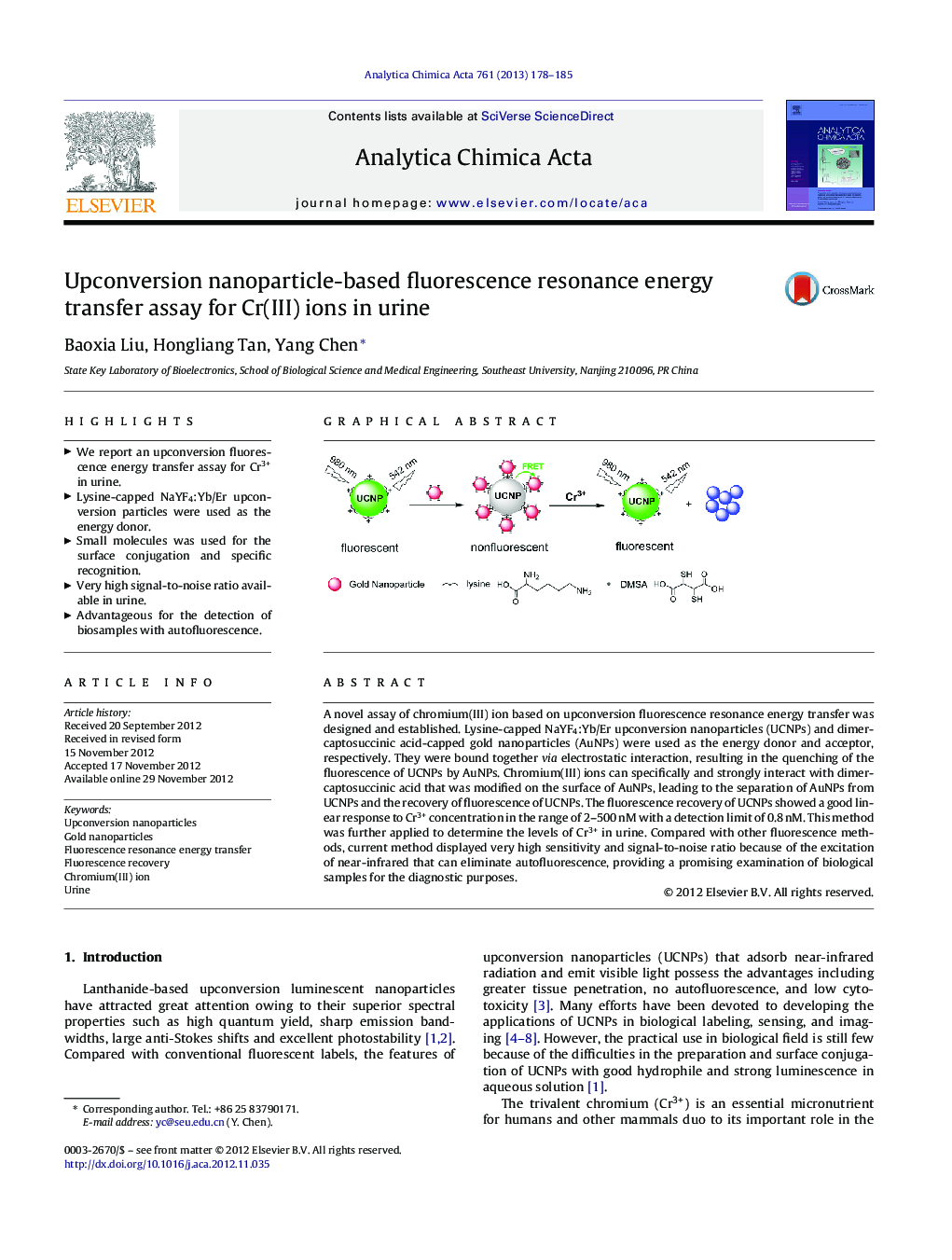| Article ID | Journal | Published Year | Pages | File Type |
|---|---|---|---|---|
| 1165187 | Analytica Chimica Acta | 2013 | 8 Pages |
A novel assay of chromium(III) ion based on upconversion fluorescence resonance energy transfer was designed and established. Lysine-capped NaYF4:Yb/Er upconversion nanoparticles (UCNPs) and dimercaptosuccinic acid-capped gold nanoparticles (AuNPs) were used as the energy donor and acceptor, respectively. They were bound together via electrostatic interaction, resulting in the quenching of the fluorescence of UCNPs by AuNPs. Chromium(III) ions can specifically and strongly interact with dimercaptosuccinic acid that was modified on the surface of AuNPs, leading to the separation of AuNPs from UCNPs and the recovery of fluorescence of UCNPs. The fluorescence recovery of UCNPs showed a good linear response to Cr3+ concentration in the range of 2–500 nM with a detection limit of 0.8 nM. This method was further applied to determine the levels of Cr3+ in urine. Compared with other fluorescence methods, current method displayed very high sensitivity and signal-to-noise ratio because of the excitation of near-infrared that can eliminate autofluorescence, providing a promising examination of biological samples for the diagnostic purposes.
Graphical abstractFigure optionsDownload full-size imageDownload as PowerPoint slideHighlights► We report an upconversion fluorescence energy transfer assay for Cr3+ in urine. ► Lysine-capped NaYF4:Yb/Er upconversion particles were used as the energy donor. ► Small molecules was used for the surface conjugation and specific recognition. ► Very high signal-to-noise ratio available in urine. ► Advantageous for the detection of biosamples with autofluorescence.
